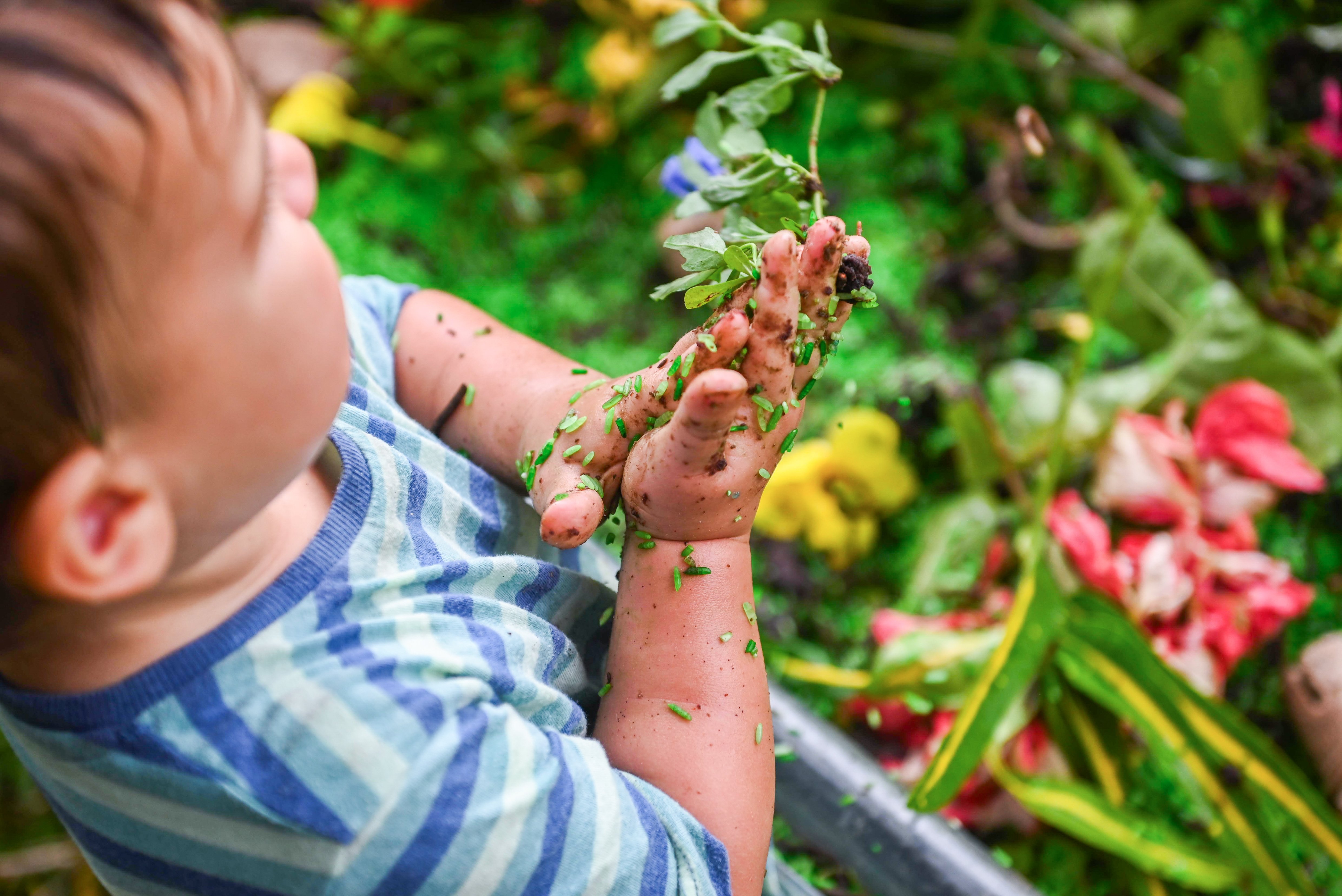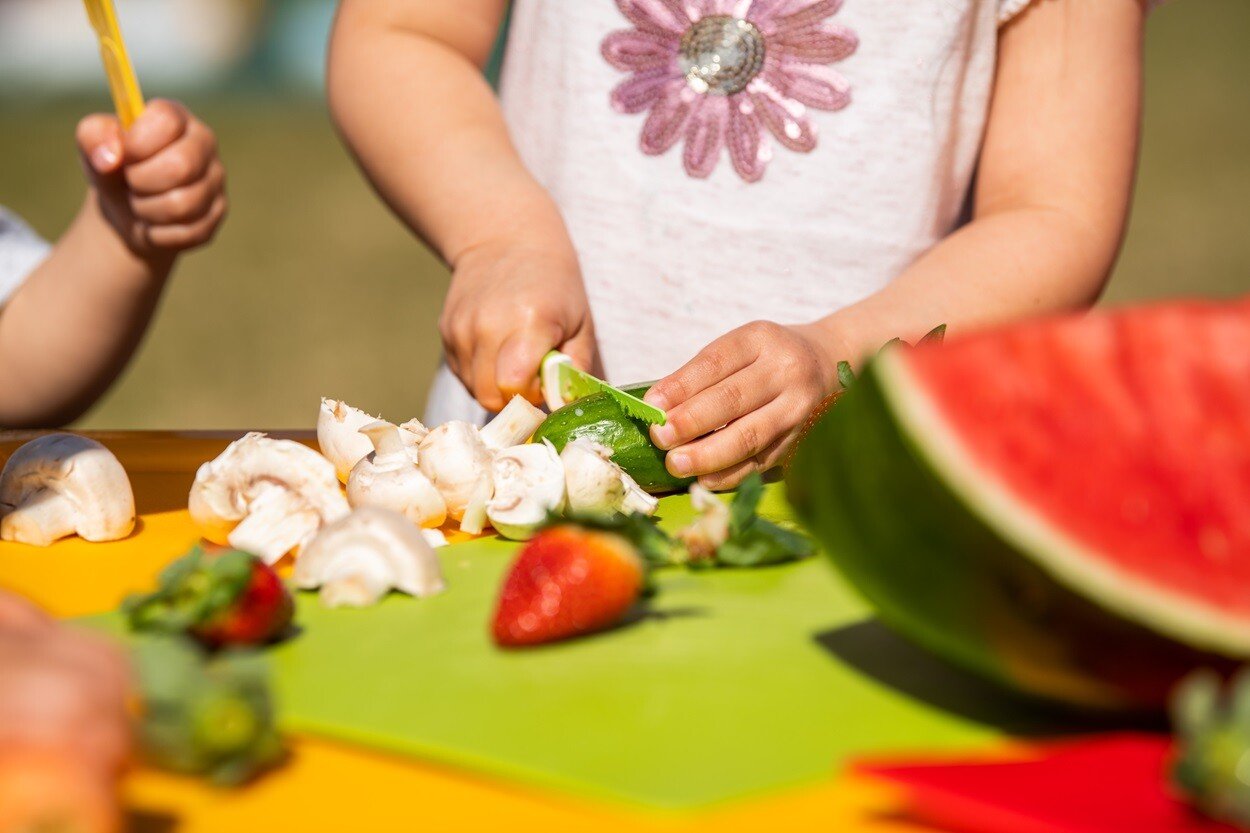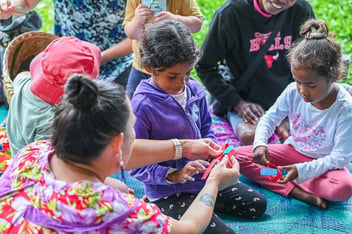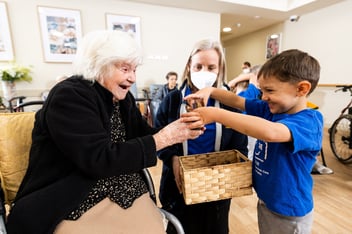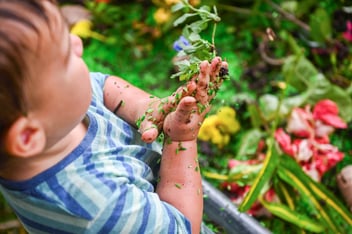
Summer Fun Camping Adventures: Exploring Nature, Culture, and Imagination
Blog > Summer Fun Camping Adventures: Exploring Nature, Culture, and Imagination

Summer Fun Camping Adventures: Exploring Nature, Culture, and Imagination

Summer brings with it a season of adventure, discovery, and boundless play. It’s a time when we spend more time outdoors, exploring new experiences, and creating lasting memories. Whether camping in the backyard, going on a family getaway, or simply enjoying nature at home, summer is all about making the most of those sunny days and warm evenings.
Camping is one of summer’s simplest joys, sparking a sense of adventure, exploration, and connection to nature. For playgroups, camping-inspired activities bring this magic to life, offering children imaginative ways to learn and play together. Through storytelling, crafts, and animal encounters, children can discover the wonders of nature while gaining an appreciation for First Nations Australian traditions.
Get ready for a summer of adventure and imagination. From creating your own campsite to exploring the stars, it’s all about embracing the season, moving with purpose, and connecting to the world around us.

Setting the Scene for a Camping Adventure
Whether your playgroup is indoors or outdoors, creating a camping scene sparks imagination and offers hands-on fun. A simple tent or blanket fort becomes the centrepiece, surrounded by cushions and natural items like leaves, pine-cones, or stones for an added touch of nature.
Set the scene with a pretend campfire made from LED tea lights, orange tissue paper, and sticks, offering a magical gathering spot for storytelling and play. This simple setup transforms any space into an inspiring environment for shared adventures, helping children connect through imaginative activities.
.jpg?width=1639&height=1093&name=PMA%20SYDNEY%20PHOTOSHOOT%20(223).jpg)
Yarning Around the Campfire
Campfires—real or pretend—are the heart of any camping adventure. While an actual fire isn’t necessary, a pretend campfire can create the same sense of wonder and focus. Invite the children to sit around it for a special story time or share simple stories or sing songs like Kookaburra Sits in the Old Gum Tree.
Yarning, a traditional practice in Indigenous Australian cultures, is a way to share stories, ideas, and knowledge in a safe and inclusive space. Introduce this idea by encouraging the children to share their own stories or listen to those being told by an adult. You might include Indigenous Australian children’s books that reflect the themes of connection to land and culture, such as "Welcome to Country" by Aunty Joy Murphy and Lisa Kennedy.
Yarning time can also serve as a way to introduce cultural elements, such as learning about the traditional uses of certain plants, seasonal changes, or how Indigenous Australians care for the land.
.jpg?width=1024&height=683&name=CONNECTING%20THROUGH%20CULTURE%20-%20WR%20PMA%20(252).jpg)
Stargazing and Navigating the Night Sky
Introduce children to the magic of the night sky with simple tools like star projection lamps or glow-in-the-dark stickers. For outdoor playgroups, tracking the sun’s position in the sky, exploring the way shadows move and stargazing at dusk can inspire wonder. Teach children about significant constellations like the Southern Cross or the Emu in the Sky, tying them to Indigenous Australian stories about navigation and connection to the land.
Interactive activities, such as drawing constellations or creating star maps, combine creativity with learning. These activities help children appreciate how stars guide us, mark the seasons, and hold cultural significance.
.jpg?width=1024&height=683&name=REDLANDS%20SPM%20WEB%20(12).jpg)
Discovering Nocturnal Animals
In Australia, many animals come alive after dark, making it the perfect time to explore the wonders of nocturnal wildlife with your playgroup. Begin by introducing children to some common nocturnal animals they might “see” while camping. Share images or toy replicas of creatures like possums, sugar gliders, owls, or bats, and explain how these animals adapt to life at night. You can also include sound clips of animal calls—like the haunting cry of a powerful owl or the rustling of a possum in the trees—to bring the experience to life.
Tie in the importance of respecting and caring for wildlife by discussing how Indigenous Australians view and interact with animals. Share Dreaming stories, like the tale of Bunjil the Eagle, to highlight how animals play a central role in culture and connection to the land.

Creative Camping Crafts
Camping activities are the perfect opportunity to engage children in creative and hands-on crafts that connect them with the natural world. These activities encourage exploration, imagination, and a sense of accomplishment as children make their own keepsakes or decorations inspired by their surroundings.
Nature Weaving: Gather small sticks, leaves, and flowers, and provide the children with a simple weaving frame or some twine to create natural art pieces. This craft can double as a sensory activity, allowing children to feel different textures and shapes while creating something beautiful.
DIY Binoculars: Using cardboard tubes, tape, and string, children can make their own “binoculars” to use on their camping adventures. They can decorate them with drawings of the animals or stars they've learned about, personalising their tool for exploration.
Painted Rocks: Encourage children to collect small rocks and paint them with images of the stars, animals, or campfire scenes. This simple activity provides a lasting memory of their camping experience and helps develop fine motor skills.
Campfire Crowns: Let children craft their own “campfire crown” headbands, using coloured paper and natural materials like feathers or leaves to represent flames or other nature-inspired designs. It’s a fun and imaginative way to extend the camping theme.
.jpg?width=1024&height=683&name=REDLANDS%20SPM%20WEB%20(9).jpg)
Ending the Day with Reflection and Relaxation
After a day full of camping-inspired adventures, it’s important to wind down with calm and reflective activities that help children process their experiences. This can also be a time to emphasise mindfulness and gratitude for the environment, the stories shared, and the connections formed throughout the day.
Campfire Reflections: Gather the group around the pretend campfire and invite children to share their favourite part of the day. You can guide the conversation by asking questions such as, “What did you enjoy the most?” or “What new thing did you learn today?” This encourages children to express themselves while reinforcing key lessons about nature, culture, and collaboration.
Quiet Story Time: End the session with a peaceful story that ties together the themes of the day. A book like "Somebody’s Land" by Adam Goodes and Ellie Laing, which introduces the concept of Aboriginal connection to the land, can be a meaningful choice. Alternatively, you might create a simple story about the day’s activities, weaving in the animals, stars, and camping crafts the children experienced.
Gentle Music or Sounds of Nature: Play soft music or recorded sounds of the Australian bush, such as rustling leaves or chirping crickets, to create a soothing atmosphere. Pair this with deep-breathing exercises or simple stretches to help children relax.
Gratitude Activity: Introduce a practice of saying “thank you” to the land and its elements—like the trees, stars, animals, or even the pretend campfire—for their role in the day’s fun and learning. This activity fosters a sense of respect and care for the environment, leaving a lasting impression on young minds.
These quiet, reflective moments help children transition from active play to calm, mindful rest, wrapping up the camping experience in a meaningful way.

A Summer of Fun, Connection, and Discovery
Camping-inspired play blends creativity, culture, and connection to nature. Through simple activities like star maps, storytelling, and nocturnal animal exploration, children gain a deeper appreciation of the world around them. Whether indoors or out, these experiences create lasting memories and foster a sense of wonder and respect for Australia’s rich natural and cultural heritage.
References
Bendigo South East College. (n.d.). Bunjil the creator. Retrieved from https://www.bendigosds.vic.edu.au/uploaded_files/media/bunjil_the_creator.pdf
Early Childhood Australia. (n.d.). Early Childhood Australia. Retrieved from https://www.earlychildhoodaustralia.org.au/
Sport Australia. (n.d.). Sport Australia. Retrieved from https://www.sportaus.gov.au/
Common Ground. (n.d.). Dreaming: Aboriginal astronomy and culture. Retrieved from https://www.commonground.org.au/dreamy
Aboriginal Astronomy. (n.d.). Aboriginal astronomy: A journey through the stars. Retrieved from https://www.aboriginalastronomy.com.au/
Pathways.org. (n.d.). The importance of symbolic play. Retrieved from https://pathways.org
Play Matters. (n.d.). Exploring global play: Enriching children's lives through cultural diversity. Retrieved from https://playmatters.org.au/blog/exploring-global-play-enriching-childrens-lives-through-cultural-diversity
Raising Children Network. (n.d.). Imagining play: Preschoolers. Retrieved from https://raisingchildren.net.au/preschoolers/play-learning/play-preschooler-development/imagining-play-preschoolers
Find a play experience near you:
Subscribe to our newsletter >
Related content:
Advertisement:
.jpg)
